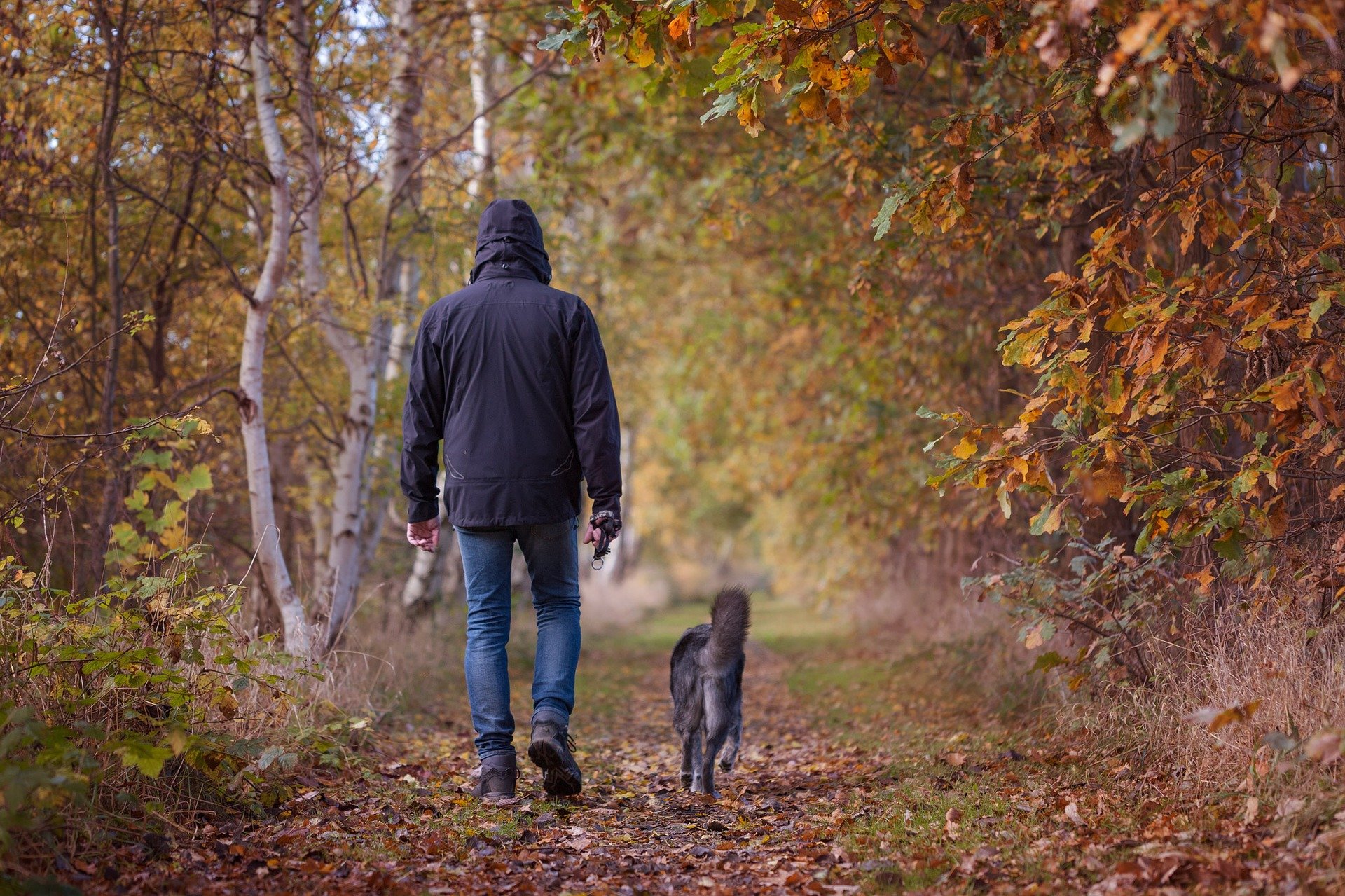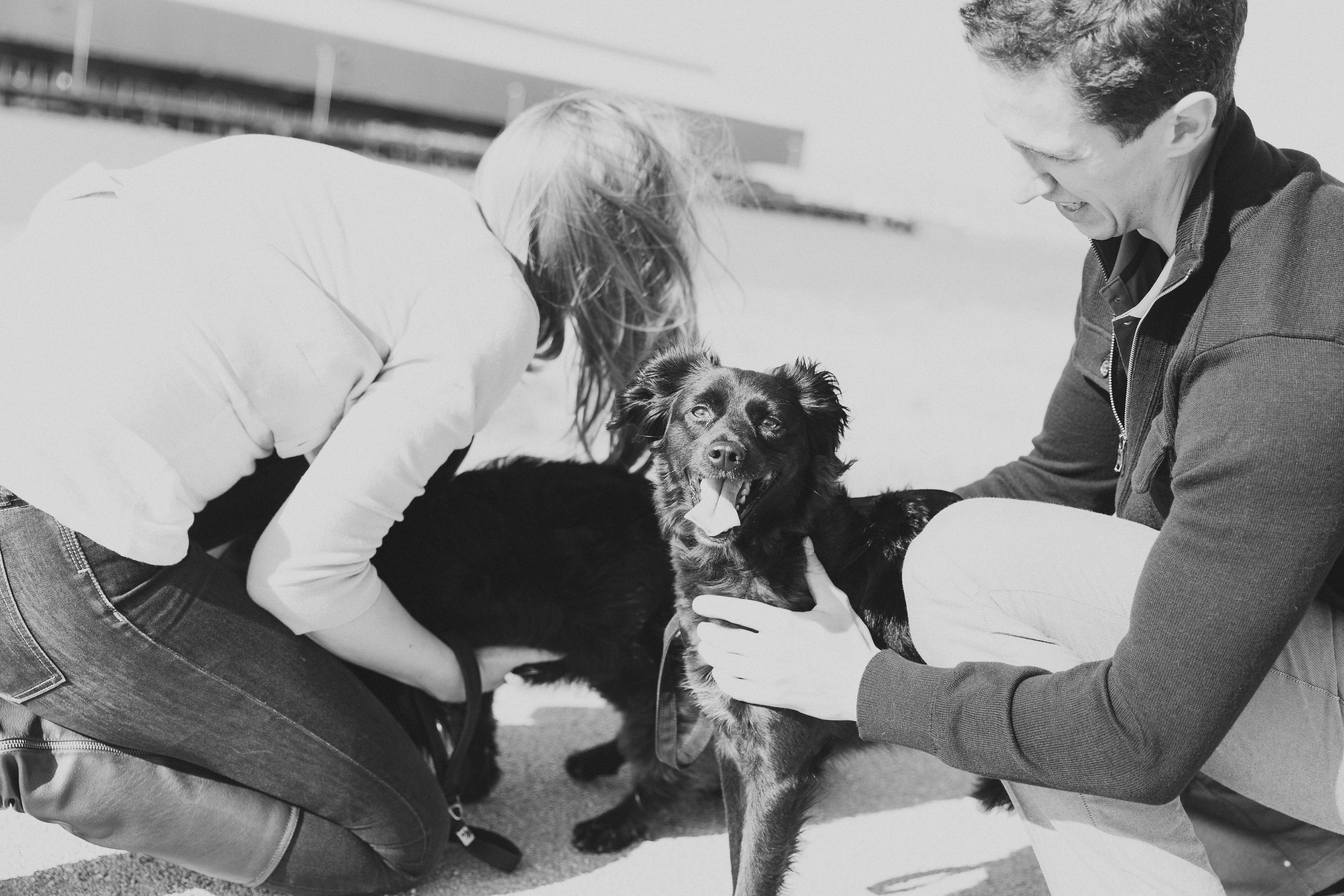Autumn is here and your dog couldn’t be happier! As the temperature drops, many pet owners notice an increase in their dog’s energy level. Even with shortened daylight hours, fall can be your dog’s favorite season. But along with the great benefits autumn provides, there are some dangers and things to look out for to keep your four-legged friend safe and happy as winter approaches.
Dogs love to be outside when it starts getting and staying cool because it is easier for them to regulate their body temperatures. They are less likely to overheat or dehydrate, which means they can run and play for longer periods of time. Long walks and wilderness hikes are a great way to keep you – and your dog – healthy and happy during the autumn months.
However, cooler weather means hibernation for many animals, like snakes, skunks and other woodland creatures. If your dog is a curious one (and which ones aren’t?) snuffling out dens and winter hideouts could be dangerous for him. Best to keep fido on a leash when walking in the woods.
Mushrooms can draw the attention of your dog as well. Many different varieties – including poisonous ones – grow rampant in wet autumn weather, and can make your dog sick. Also, be wary if there are poisonous snakes in your area. Some snakes get increasingly aggressive as they prepare to sleep for the winter. If your dog gets bitten or eats a mushroom, call your veterinarian at once or contact the ASPCA Animal Poison Control Center at (888) 426-4435 immediately.
“Long walks and wilderness hikes are a great way to keep you – and your dog – healthy and happy during the autumn months.”
Just as your dog is looking to make his way outside, lots of pests and vermin are looking to find their way in! The use of rat and mouse poison goes up in the fall as homeowners and landlords look to prevent rodents from nesting indoors. Many pesticides and rodenticides can be deadly to dogs if ingested. Choose nontoxic chemicals to treat your home with, or consult with your exterminator about what they put down around your property. Be sure to keep any and all chemicals out of fido’s reach.
Your dog is itching to explore the great outdoors, but he might also be just plain itching! Allergies in dogs are triggered by seasonal change in the same way they are in people. Allergens can run rampant in fallen and decaying leaves, dried weeds and stronger winds. Symptoms of allergies often present as watery eyes, excessive scratching or licking, and even sneezing and coughing. Your veterinarian can help identify causes and treatments for your dog.
Finally, even though fleas and ticks mainly thrive – and wreak havoc – in warmer temperatures, they are super resilient pests, and can cause your pet harm all year long. Fleas begin to go dormant in the fall, once temperatures drop into the 60s and 50s, but they don’t completely die off, and have been known to live in temperatures as low as the 30s. Adult ticks can cause your dog harm even as temperatures drop into the mid 40s. Because of this, veternarians reccommend keeping up with your dog’s anti-flea and tick treatments even during the fall and winter months.
All said, fall is fido’s friend so bundle up and take him outside to play. Fresh air is good for your – and his – soul!

Image by schroederhund from Pixabay
If you enjoyed this post, you should read The Family Dog: Breeds to Consider When You Have Children here.
Which season is your dog’s favorite?
